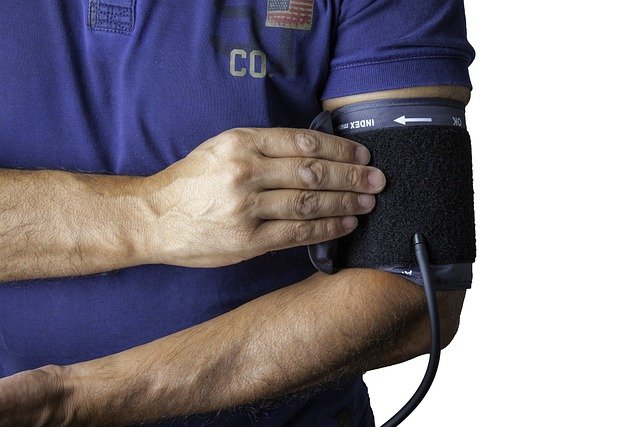Living With Pulmonary Hypertension: Care Tips
Pulmonary hypertension affects circulation and breathing, requiring ongoing care and lifestyle adjustments. Understanding symptom monitoring, daily habits, and medical guidance may help individuals manage the condition and maintain comfort in everyday routines.

Pulmonary hypertension affects the blood vessels in the lungs, causing them to narrow and increasing the workload on the heart. This condition can lead to fatigue, shortness of breath, chest pain, and dizziness, which may interfere with everyday activities. While medical intervention is crucial, the role of self-care and lifestyle management cannot be understated. Individuals diagnosed with this condition benefit from a structured approach that combines medical guidance with practical daily habits designed to reduce strain on the cardiovascular system.
This article is for informational purposes only and should not be considered medical advice. Please consult a qualified healthcare professional for personalized guidance and treatment.
Daily Management and Monitoring
Consistent monitoring is a cornerstone of managing pulmonary hypertension effectively. Patients are often advised to track their symptoms, including changes in breathing patterns, energy levels, and any new or worsening signs such as swelling in the ankles or legs. Keeping a daily log can help identify patterns and alert healthcare providers to potential complications early. Many individuals use pulse oximeters at home to monitor oxygen saturation levels, which provides valuable information about how well the lungs are functioning. Blood pressure monitoring may also be recommended, depending on the individual case. Regular follow-up appointments with a cardiologist or pulmonologist are essential to assess disease progression and adjust treatment plans as needed. Medication adherence is critical, as prescribed therapies help manage symptoms and slow disease progression. Setting reminders and organizing medications can improve consistency and prevent missed doses.
Lifestyle Habits for Comfort
Adopting supportive lifestyle habits can significantly improve comfort and reduce symptom severity. Physical activity should be approached carefully, as overexertion can worsen symptoms. Light to moderate exercise, such as walking or gentle stretching, may be beneficial when done under medical supervision. Patients should avoid high-altitude environments and extreme temperatures, as these conditions can strain the cardiovascular system. Maintaining a balanced diet low in sodium helps prevent fluid retention, which can exacerbate swelling and breathing difficulties. Staying hydrated is important, but fluid intake may need to be monitored based on individual medical advice. Adequate rest and quality sleep support overall health and energy levels. Stress management techniques, including meditation, breathing exercises, and relaxation practices, can help reduce anxiety and improve emotional well-being. Avoiding smoking and limiting alcohol consumption are strongly recommended, as these substances can negatively impact lung and heart function.
Working With Medical Guidance
Collaboration with healthcare providers is fundamental to effective management of pulmonary hypertension. Treatment plans are highly individualized and may include medications such as vasodilators, diuretics, anticoagulants, or oxygen therapy. Regular diagnostic tests, including echocardiograms, right heart catheterization, and pulmonary function tests, help monitor disease progression and treatment effectiveness. Patients should communicate openly with their medical team about symptoms, side effects, and any concerns that arise. Some individuals may benefit from participation in pulmonary rehabilitation programs, which offer supervised exercise training and education on disease management. In advanced cases, more intensive interventions may be considered. It is important to stay informed about the condition and ask questions during medical appointments to ensure a clear understanding of treatment goals and expectations. Support groups and counseling services can provide emotional support and practical advice from others facing similar challenges.
Recognizing Warning Signs
Being able to identify warning signs of worsening pulmonary hypertension is crucial for timely intervention. Sudden increases in shortness of breath, chest pain, fainting episodes, rapid or irregular heartbeat, and significant swelling in the lower extremities are red flags that require immediate medical attention. Unexplained weight gain may indicate fluid retention, which can signal heart failure complications. Bluish discoloration of the lips or fingertips suggests inadequate oxygen levels and should be addressed promptly. Patients and their families should have an emergency plan in place and know when to seek urgent care. Early recognition and response to these symptoms can prevent serious complications and hospitalizations.
Building a Support System
Living with a chronic condition like pulmonary hypertension can be emotionally and physically demanding. Building a strong support system is essential for long-term well-being. Family members and friends can provide practical assistance with daily tasks, transportation to medical appointments, and emotional encouragement. Connecting with others who have the condition through support groups, either in person or online, offers a sense of community and shared understanding. Mental health support, including counseling or therapy, can help individuals cope with the emotional challenges of managing a chronic illness. Educating loved ones about the condition fosters empathy and enables them to offer more effective support.
Planning for Long-Term Care
Long-term management of pulmonary hypertension requires ongoing commitment and adaptability. As the condition evolves, treatment plans may need adjustment. Regular reassessment of lifestyle habits, medication regimens, and symptom management strategies ensures that care remains aligned with current needs. Advance care planning, including discussions about treatment preferences and goals, is an important aspect of comprehensive care. Staying proactive and engaged in one’s health journey empowers individuals to maintain the best possible quality of life while living with pulmonary hypertension.
Managing pulmonary hypertension is a multifaceted endeavor that combines medical treatment, lifestyle modifications, and consistent monitoring. By working closely with healthcare providers, adopting supportive daily habits, and recognizing warning signs, individuals can navigate the challenges of this condition more effectively. Building a strong support network and staying informed are equally important components of long-term care. With the right strategies and resources, those living with pulmonary hypertension can continue to lead fulfilling lives while prioritizing their health and well-being.




